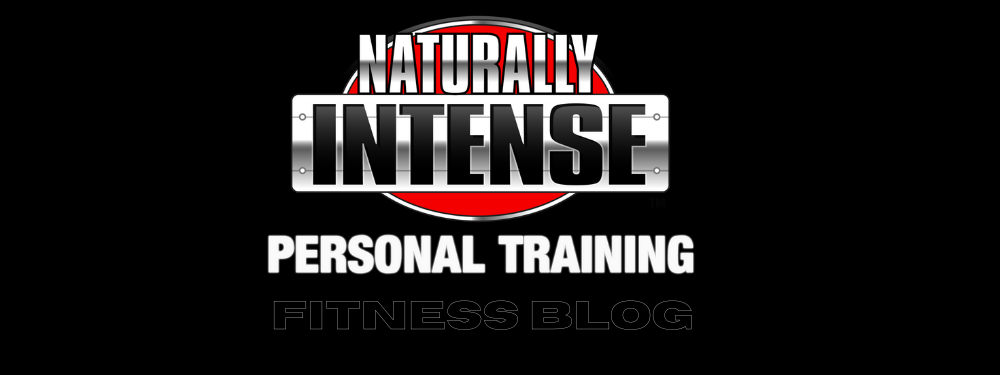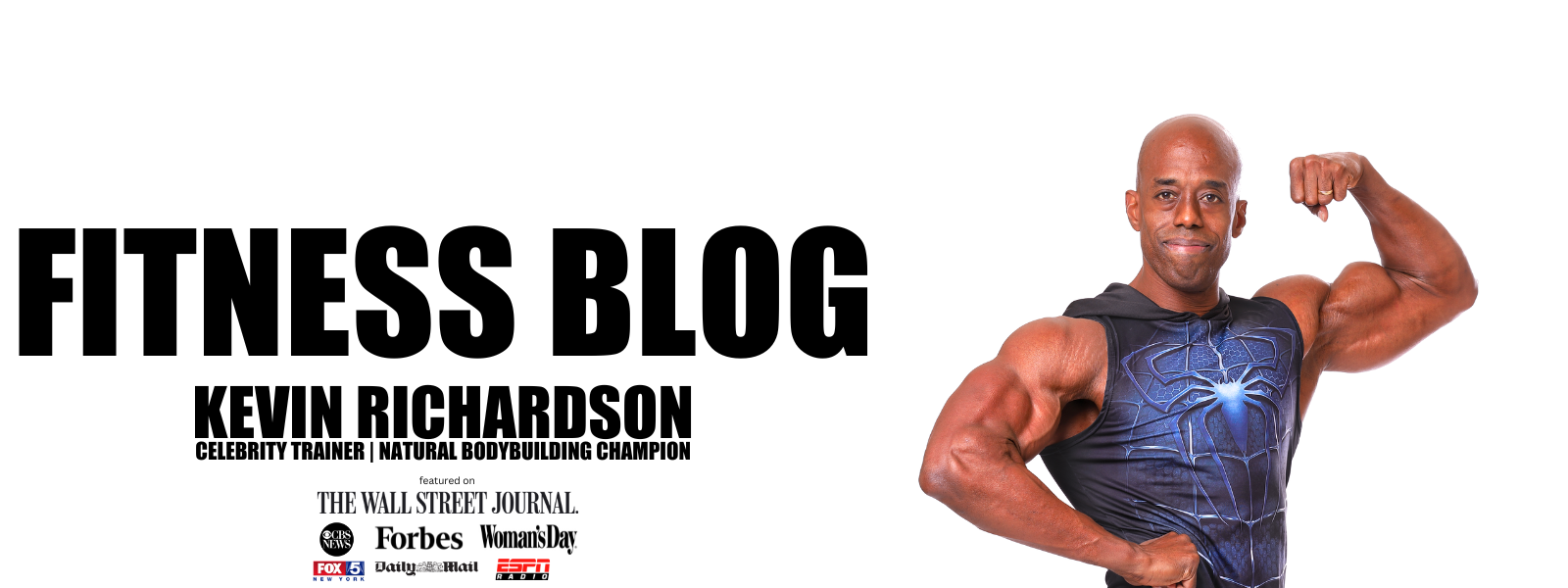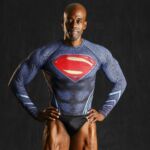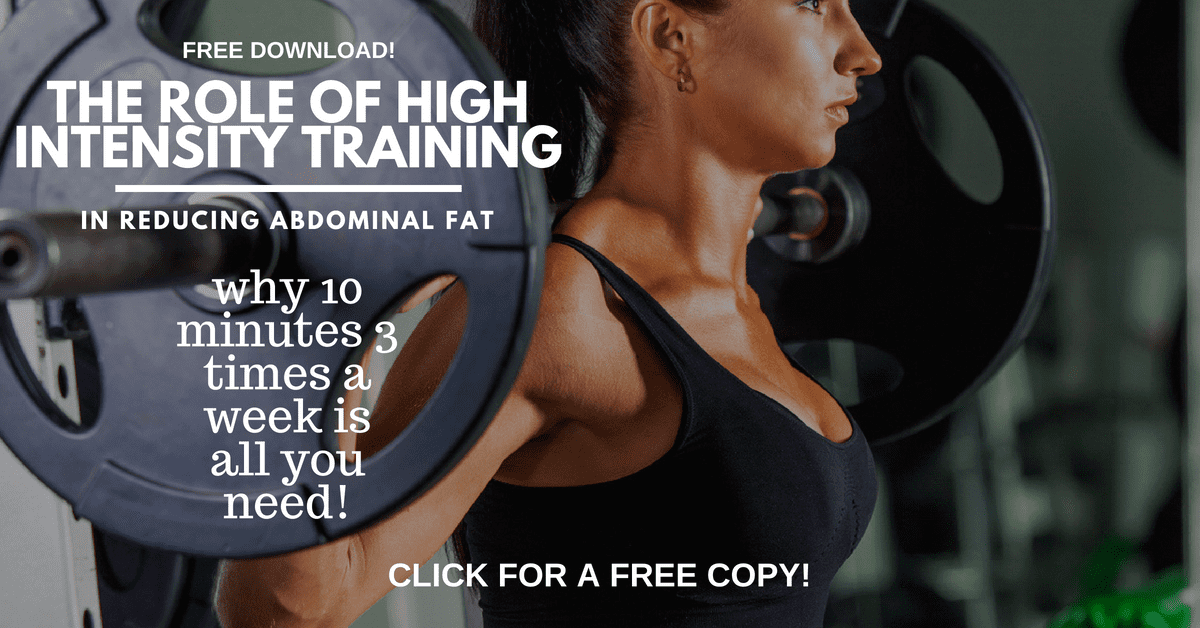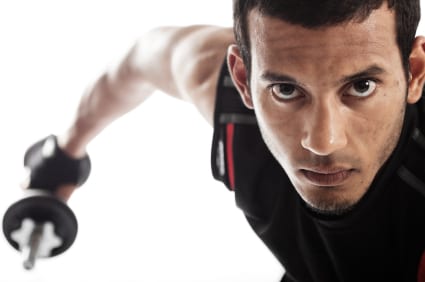
Delayed Onset Muscle Soreness- Understanding No Pain No Gain
We all know the mantra when it comes to weight training or just about any type of intensive exercise- ‘No pain no gain’, and as anyone starting a training program can attest- the first few days after your initial workout can be painful indeed. We call it muscle soreness, or just plain pain, but the technical term used is Delayed Onset Muscle Soreness (DOMS). Call it what you like but Delayed Onset Muscle Soreness isn’t always a bad thing. On the contrary, in many ways it is a natural part of the adaptation response- the very process that our body uses to make our muscles bigger and stronger (See my article: How Do Muscles Get Bigger & Stronger). That being said, there is some credibility to the ‘No Pain No Gain’ credo.
As much as pain may be a part of an intense exercise program you have to be aware of the differences between DOMS and an injury or chronic syndrome such as arthritis. The differences are usually quite marked, however after your first bout of exercise after a period of relative inactivity DOMS can feel quite crippling indeed! Given the high intensity protocols that are the hallmarks of my own training style, I can honestly say that there is almost never a day when I don’t have a muscle group that isn’t sore. So much so that some mornings I wake up hoping that someone got the license plate numbers of the truck that ran over me! You might think that twenty plus years of high intensity training would confer some immunity to muscle soreness, but I can tell you honestly that this isn’t the case (my legs hurt right now as I type this article!) Given my years of being so intimately acquainted with this type of pain, you might call me a wee bit of an expert, and in this article we will explore the mechanisms behind muscle soreness as well as dispel some of the myths.
Delayed Onset Muscle Soreness- The Mechanisms
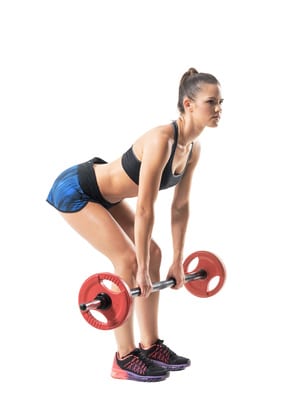
You can think of your muscles performing three different types of contractions- concentric contractions, eccentric contractions and isometric contractions. Concentric contractions occur when you do an exercise like a biceps curl and bring a weighted barbell up to your face. By flexing your elbow to raise the weight up towards your shoulder you contract your biceps muscles and make the muscle fibers in your upper arm physically shorter- that’s a concentric (or shortening) contraction. However, when you lower the weight from your face back to the resting position you are performing an eccentric contraction. Eccentric contractions are characterized by a lengthening of your muscle fibers and play a significant role in muscle soreness as you will see as we go along. An isometric contraction is one where you simply hold an object in a fixed position- and so using our model of a biceps curl- holding the weight up halfway without moving it would be a classic example of an isometric contraction (isometric, by the way means no change in length.)
Now there are some points that must be kept in mind when our muscles perform a eccentric or lengthening contraction. Firstly, absolute tensions achieved are very high relative to the muscle’s titanic tension generating ability. In plain English this means that you can lower a weight that is much heavier than what you can lift. Anyone who has ever done weight training with a partner or trainer may have experienced this firsthand as there comes a point where you can no longer lift a weight, but if someone helps you get the weight up, you can still lower it under control. The second factor is that skeletal muscle tissue is resistant to lengthening by its very nature. So unaccustomed exercise of repeated or forced eccentric (lengthening) contractions will induce muscle damage. Damage that we experience as delayed onset muscle soreness. [1,2,3]
An example that most can relate to is the soreness you experience after a day of hiking in mountainous terrain. You may notice days afterwards that your leg muscles and calves are sore and this can happen regardless of whether or not you have strong legs and are in good shape. The soreness isn’t an indication that your leg muscles are weak, it’s just a result of the extensive lengthening actions these muscles have to perform while descending and at unaccustomed angles. Funny enough going up a mountain, or climbing flights of stairs won’t do much to make you sore the next day, it’s the descent that gets you. When I was younger and morbidly fascinated with the idea of sprinting up the staircases of tall buildings (we didn’t have much in the way of skyscrapers where I came from) I found that I didn’t feel sore the next day even running up 20 flights of stairs three or four times. I would always take the elevator down and catch my breath but one day it was out of service and I had to walk down the stairs each time. I was quite surprised to find that I was almost handicapped with pain for the next few days- the reason being the extensive amount of muscle lengthening movements involved in walking down the stairs. (See my article Full Range Of Motion vs Partial Reps)
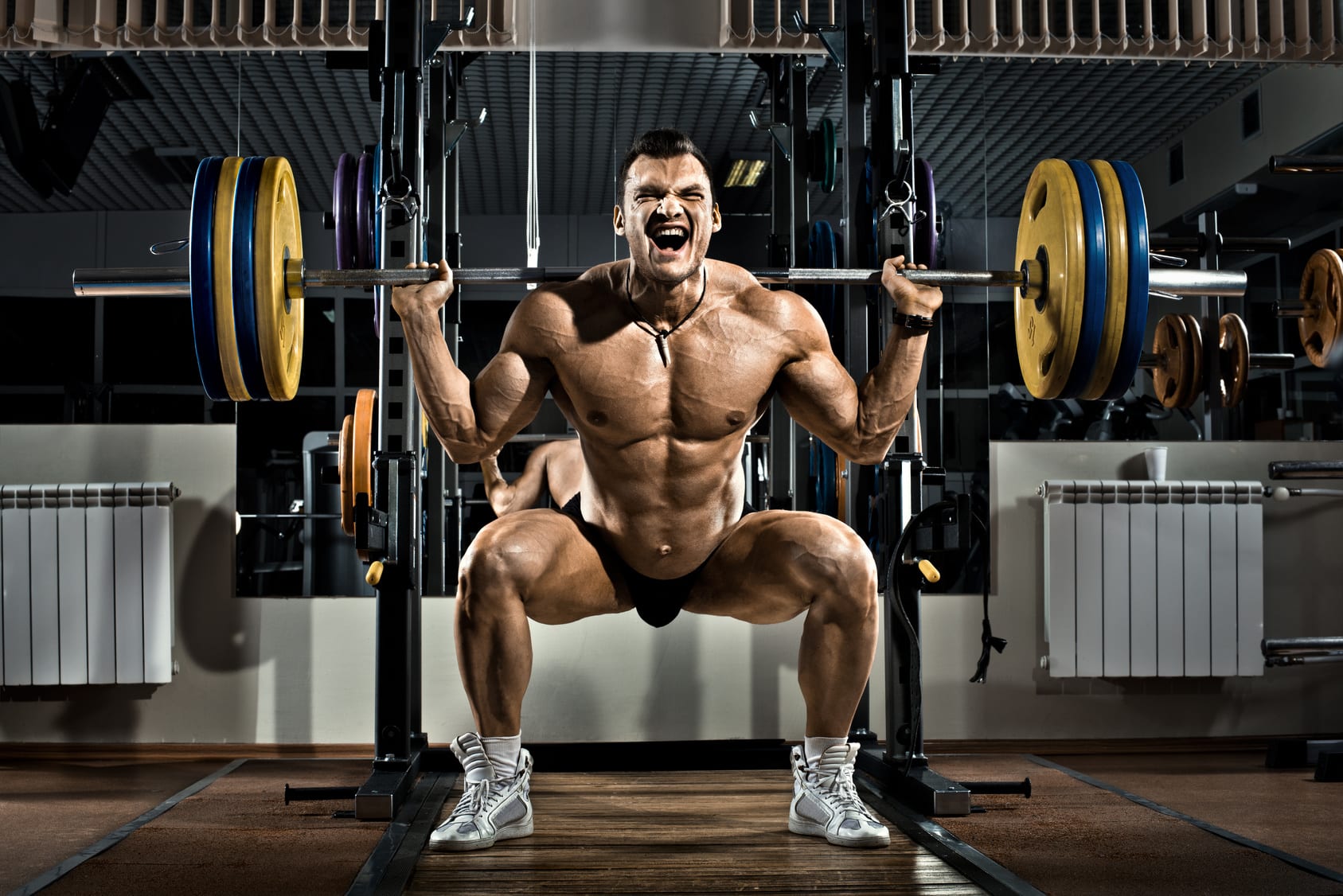
The Myth of Delayed Onset Muscle Soreness & Lactic Acid Buildup
Now running up those stairs, my legs muscles would feel a serious burn! The same burning sensation occurs during all of my high intensity workouts, but contrary to popular belief, this pain has very little to do with lactic acid. In fact lactic acid doesn’t really play a part in delayed onset muscle soreness. Researchers once believed that lactic acid buildup was indeed the cause of the burning sensation you feel in your muscles during any intense exercise and it was further thought that lactic acid was responsible for DOMS. However, this has been proven to not be the case at all. Lactic acid as it turns out is actually a metabolic by-product of our muscular contractions and it breaks down very quickly into a useable fuel source for your muscles. Consequently, there is little accumulation in your muscle cells that could explain the burning sensation or the delayed onset soreness felt afterwards.
Before you get mad at researchers for not getting it right the first time, you have to understand that knowing precisely what goes on inside our bodies during an activity is a very difficult task. Much of what we know of the human body and how it works is akin to having an object inside of a box and trying to figure out what’s happening on inside without being able to open it. We can perform tests that allow us to make educated guesses as to what is going on, but we can’t open the box to be 100% sure. The same applies to our bodies, as short of surgically cutting into our muscles and observing what’s going on during exercise we have to rely on tests that give us indications of what happens after the activity is performed- not during. Modern ultrasound tests and magnetic resonance imaging can give us some clues as to what’s going on inside our bodies during exercise, but as advanced as it may be imaging technology still doesn’t always conclusively answer all of our questions. That being said, research is always ongoing and every day it seems like we learn something new. The current theory for the burn you feel in your muscles while training is that it is caused by calcium or other substrates in our muscle cells[3] but again, it is still an educated guess at this point.
Delayed Onset Muscle Soreness & Pain
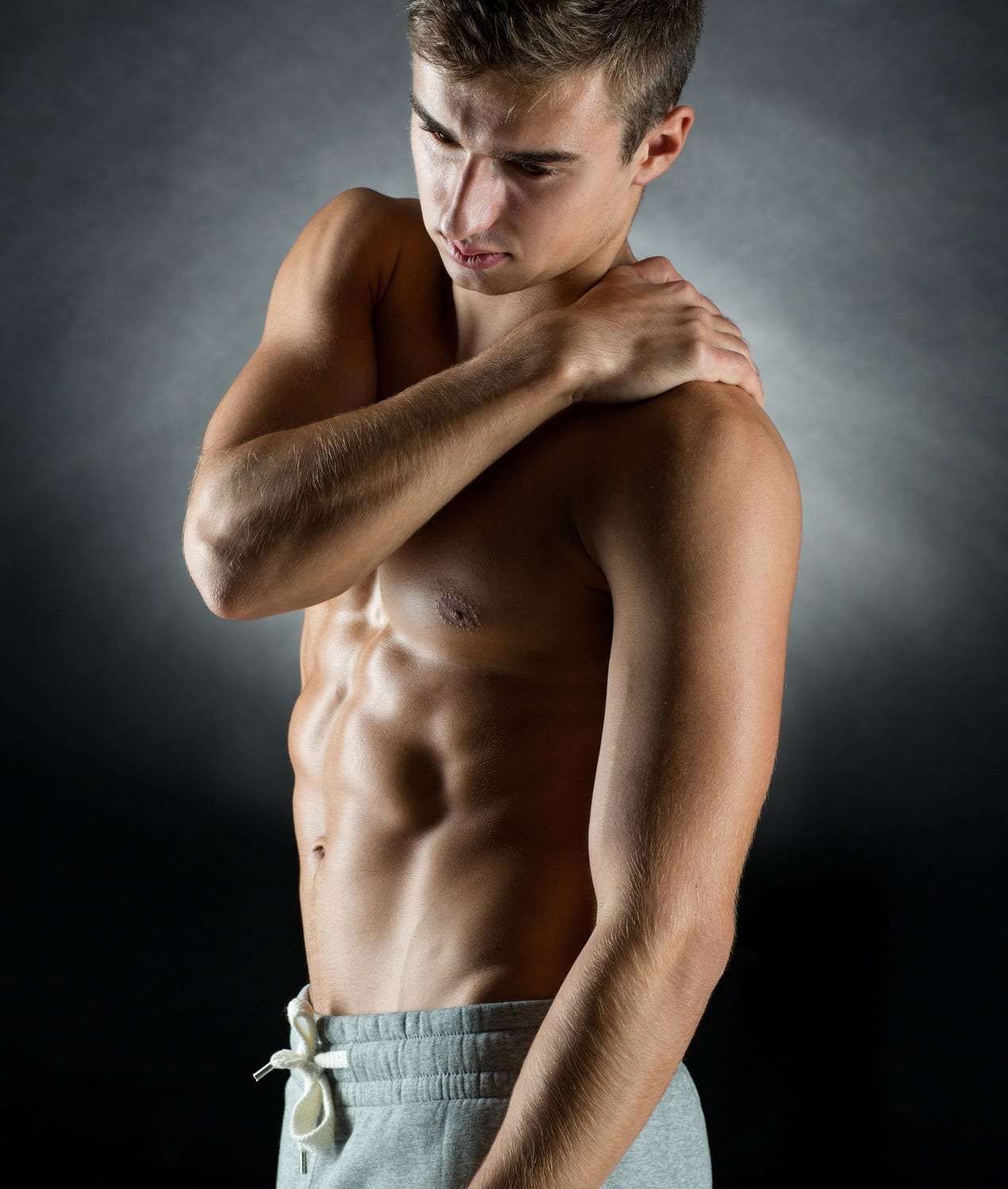
Pain is a difficult thing to measure as our perception of pain is influenced by so many factors including age, gender as well as social and cultural norms about acceptable behavior while experiencing physical discomfort.[4] That being said, two different people can experience the same magnitude of tissue damage due to intensive exercise, but experience radically different magnitudes of perceived pain as pain is such a completely subjective phenomenon.[3] There is the aspect of adaptation as well as someone experienced in high intensity weight training won’t react to delayed onset muscle soreness the way someone experiencing DOMS for the first time after their first couple of workouts will. You do tend to get used to it over time, and some people absolutely love the feeling of something aching all the time (I think of it as a dress rehearsal for when I am in my nineties!) while others learn to simply ignore it. My personal observations over the years having trained hundreds of clients is that men tend to be more debilitated by DOMS than women. The pain usually starts within 24 hours of the activity and can become worse the second day and at times it can linger for as long as a week depending on the degree of muscle damage and how accustomed you might be- (or not) to the exercise performed. Either way it isn’t ever permanent and unlike an acute or chronic injury, more exercise can actually make it feel better.
Delayed Onset Muscle Soreness & The Adaptive Response
One great part of delayed onset muscle soreness is that in some cases it can be a step in the process of making your muscles bigger and subsequently stronger. What we do know is that after the breakdown of our muscle fibers during high intensity or unaccustomed exercise, our bodies initiate a cleanup phase that rids the muscle cells of dead tissue.[3] The muscle cells replacing them are more stress resistant than the ones that were there previously, which is why we aren’t always sore after every workout and is also how our muscles get bigger and stronger. (See my article on how Muscles Get Bigger & Stronger for a detailed look at the adaptive response). That being said, we don’t know why the pain caused by delayed onset muscle soreness isn’t instant, nor do we know whether or not the muscle damage theory is the sole cause. Other theories suggest that the pain may be caused by changes in connective tissue as a result of activity and that there is a significant inflammatory response- which could explain why the pain isn’t instantaneous.[5]
Reducing Delayed Onset Muscle Soreness- Should You Take Pain Killers?
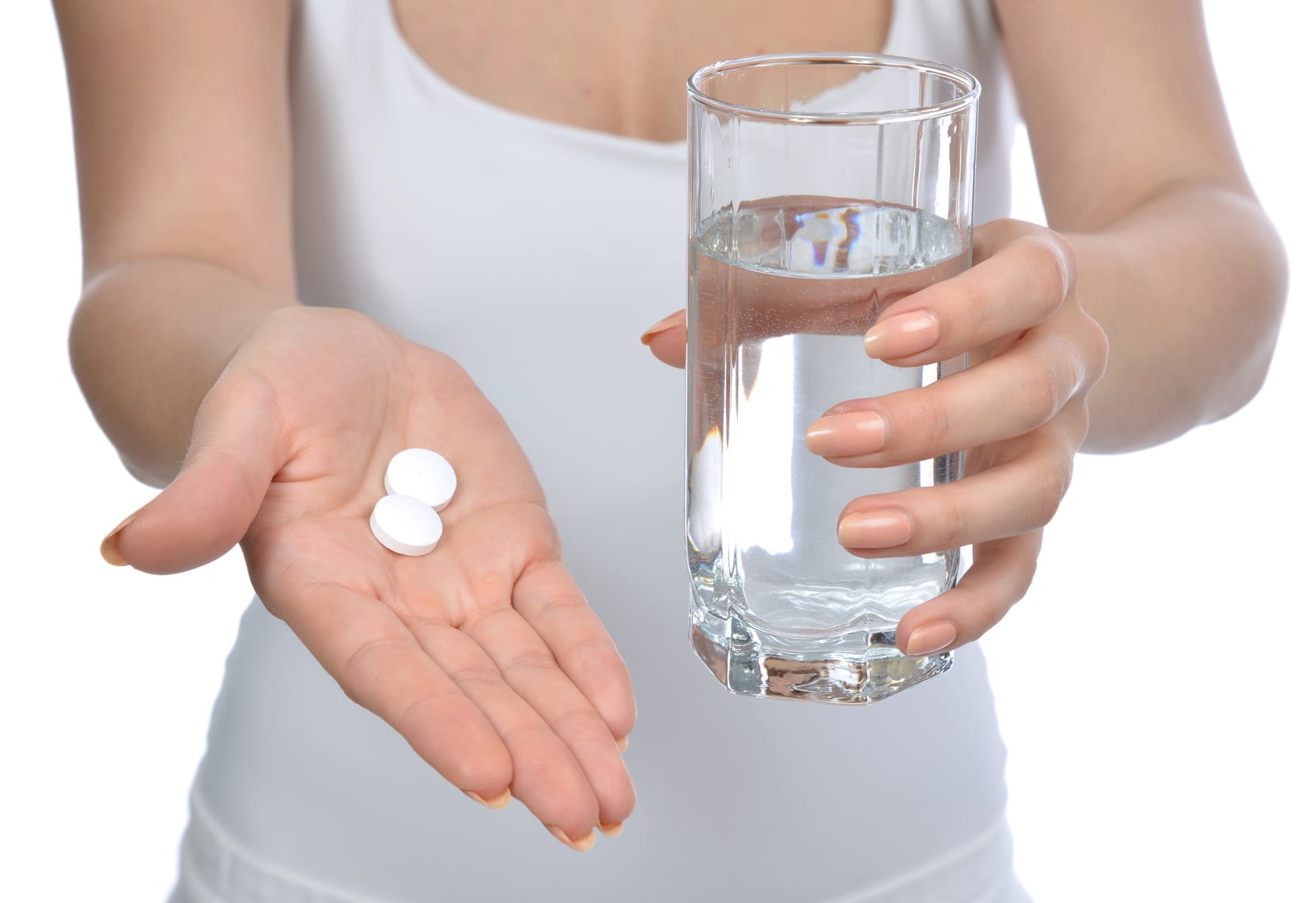
Non steroidal anti-inflammatory drugs (NSAIDs) are routinely prescribed and used informally by many experiencing delayed onset muscle soreness after training to alleviate pain and restore normal physical function. Given that the inflammation response may play a significant role in activating the adaptive response to make your muscles stronger, the practice of taking over the counter non steroidal anti-inflammatory drugs such as aspirin or ibuprofen as a way of relieving the pain may not be a great idea as it might actually make you get less results from your workouts. Non steroidal anti-inflammatories work by blocking the production of prostaglandins- which initiate the inflammation response in our bodies. Now under normal circumstances when we are injured this might be a good thing as it will significantly reduce discomfort during periods of injury, but with delayed onset muscle soreness, it might be detrimental in some cases as the inflammation response is a key trigger for the muscle regeneration and super-compensation that occurs post exercise that makes our muscles stronger.[6]
The studies have been somewhat conflicting in that as some findings indicate that among those who are untrained, the use of NSAIDS does not appear to impede muscle growth in the short term and one study found it to have a positive effect. The problem is that since there are no studies on the chronic use of NSAIDs for delayed onset muscle soreness, we don’t know when it stops being beneficial, so even those starting out should exercise caution when reaching for a pain killer after a hard bout of exercise as time goes on. NSAIDs do, however, impair satellite cell activity crucial for muscle growth and it is recommended that long term use be avoided, especially in those seeking significant improvements from their workouts.[6] The other problem is that since NSAIDS reduce the perception of muscle soreness, it can lead to over training since masking pain can prompt the individual to not rest as much as they should and thus increases the risk of training to the point of serious injury. [7,8] [See my Article On Exercise Addiction]
Relieving Delayed Onset Muscle Soreness- Does Stretching Work?
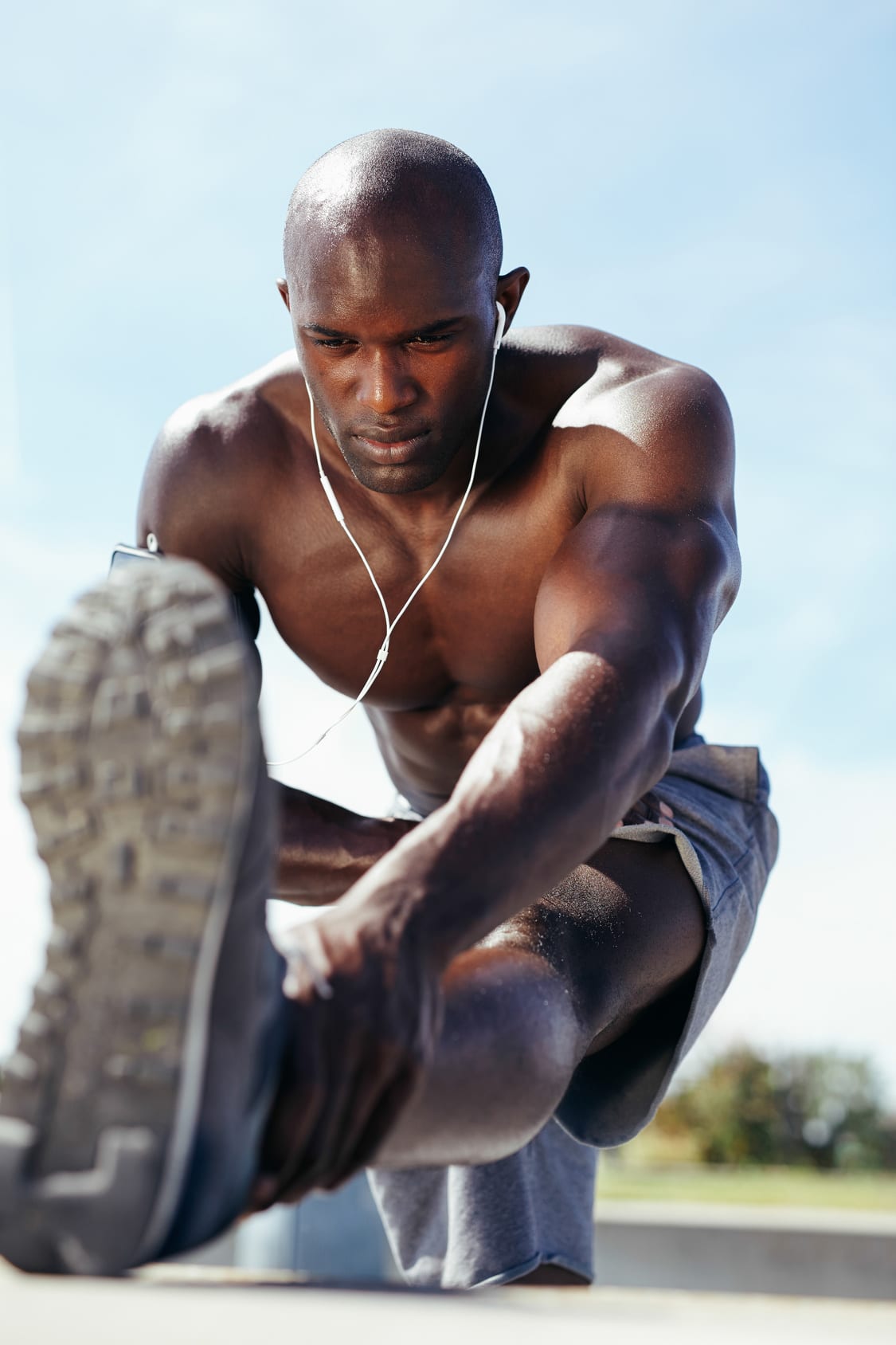
Many steadfastly believe that stretching may decrease the degree of post exercise soreness after a hard workout, but this approach, though common, is somewhat misplaced. In a study published in the Physician and Sportsmedicine, twenty three subjects were made to do a thirty minute step exercise designed to bring about delayed onset muscle soreness due to the amount of eccentric contractions in the thigh and calf areas. For the members of one group, the exercise was followed immediately by static stretches of the muscles involved, while the control group did no stretches at all. Regardless of whether they stretched or not, all participants reported significant soreness for three days after the workout. Stretching did nothing to alleviate post-exercise soreness nor did it lower blood levels of creatine kinase- a protein found inside muscle cells that is released when they are injured and a key indicator of muscle damage.[9]
Instead a useful treatment would be to ice or cool down the muscles exercised immediately after training, followed by warm baths or showers a day or more after your exercise session. Back home the practice was to train and then go take a bath in the sea right afterwards and it did indeed work wonders in reducing the amount of pain you would feel the next day. Massage therapy can also go a long way in helping you deal with the pain associated with delayed onset muscle soreness as well if you can get it, but in some case people prefer not to have anyone touch them when they are really sore.
Tips For Relieving The Pain Associated With With Delayed Onset Muscle Soreness
- Immediately after a workout take a cold or cool shower or bath
- Take a warm bath or shower 24 hours or longer after the workout
- Try to move the muscle group a bit with some light exercise as the increased blood flow can help minimize the pain
Important Point: Delayed Onset Muscle Soreness Is Not An Indicator Of An Effective Workout
While many look to how sore they are after a workout as a measure of how hard they trained and how effective their workout was, the fact is that how sore you are after a workout isn’t necessarily an indication of how hard you trained or your workout effectiveness and should not be used as such. Delayed onset muscle soreness can occur from performing an activity with very little stress on your muscles that you might not be used to doing, but that doesn’t mean that your muscles will get bigger or stronger as a result. Take a highly trained athlete and have him or her spend a day doing some gardening and most likely they will be sore in the following days. That doesn’t mean that their muscles will get bigger or stronger as a result, just that the activity may have involved muscle lengthening in positions that they were not accustomed to at the time. There are other considerations as well, some people have naturally high pain thresholds and don’t ever seem to suffer much from delayed onset muscle soreness regardless of how hard they train. Pain is very much a subjective experience and since quantifying it can vary significantly from person to person, it is a pretty poor barometer of how much work you did. Your level of muscle soreness can also be affected by how well rested you are, your nutrition and your level of hydration. It can also vary based on what phase your muscles are in with regard to cleanup of dead tissue and regeneration. Either way it’s a huge mistake to use muscle soreness exclusively as a gauge of how effective your workout was since there are so many variables involved. Some days you’ll feel crippled after a relatively moderate workout, while other times after a hard training session your muscles won’t hurt that much at all. What’s important is to know when the pain isn’t just soreness and to always consult your physician if you suspect the pain you are feeling might be injury related.
High Intensity Bodyweight Training: Ballistic Pushups & Dips!
This was a tough one!
Starts out with ballistic push ups (like clap pushups but without the clap as my wrist is still not 100%) nonstop for 20 reps, then all out on dips for 10 reps.
To say it was painful would be an understatement, but you just have to push through and keep on going.
Still training, hope you are too and as always, Excelsior!!! #naturallyintense
#hometraining #homeworkout #homeworkout #highintensitytraining #naturalbodybuilder #naturalbodybuilding #fitover40 #naturalbodybuildingvideos #chestday #chesttraining #naturalbodybuildingtips #pushups #dips #bodyweighttraining #highintensitytrainingtips #drugfreebodybuilding #calesthenics
Kevin's Unconventional Biceps Training- 3-6 Minutes a Week!
In this video I go over my biceps training using the Naturally Intense High Intensity Training protocols that helped me go from having arms measuring 11.5 to 12 inches to 18 inches drug free!
It's an unconventional approach for certain, but it's one that's helped my arms grow and the hundreds of men and women I have trained over the past 30 plus years.
Now, my success isn't due to being genetically gifted, as it took me the better part of 11 years to get my arms up to those measurements.
Which is significant as it works and been been proven time and time again to work for the average man or woman trying to grow their arms without drugs.
It's my hope that these high intensity training protocols can help you as much as they helped me!
Click on my bio link to see the full video on my YouTube channel and thanks as always for taking the time to look at my work!!! Excelsior!!! #naturallyintense
#highintensitytraining #naturalbodybuilder #naturalbodybuilding #fitover40 #naturalbodybuildingvideos #armworkout #bicepsworkout #naturalbodybuildingtips #biceps #armtraining #highintensitytrainingtips #drugfreebodybuilding #barbellcurls
At the Lancaster Classic Day 2 Elimination Rounds Against European Champion, and World Record Holder Leo Pettersen @leo_barebow_archer
I don't talk much about it but I'm also a competitive barebow archer (surprise!) and last Saturday I had the honor of making it to Day 2 at the Lancaster Archery Classic in the Barebow Division, as I made the top 64 out of 267 competitors and had a chance to shoot with some of the greatest barebow shooters on the planet!
I didn't make it past Leo, but it was a real rush to be there and a huge thanks to my coach, Joe MyGlyn @prolinearchery for helping me get there.
Thanks as well to my good friend @sean_chan33 for all of his help from the very start, to my line buddy Aaron Shea for taking the shot and showing up to support!
My thanks as well to rob_kaufhold for putting on and promoting one of the best archery tournaments on earth!
Thanks also to to everyone who took the time to send a supporting word and I am looking forward to next year!!! #naturallyintense #barebow
#lancasterclassic #lancasterarcheryclassic2024 #lancasterarchery #archery #fitover40 #barebowrecurve #targetarchery
Dumbo, Brooklyn circa 2004
This shot was taken as part of the promotion for my Naturally Intense DVD and was about a year after my last bodybuilding competition.
It was a grueling photoshoot.
We started at about 10 am and finished around 4pm and I was completely spent, but the more we shot the sharper I looked, so we kept on going.
It's nice to look back from time to time and as tired as I was, we all had a blast!
My thanks to @stephanie_corne_artwork, @https://pulse.ly/itgnag2dec and @ftaz1 for taking the shots!!!
Thanks for watching and as always, Excelsior!!! #naturallyintense
#naturalbodybuilder #naturalbodybuilding #throwback #fifthavenuegym #5thavenuegym #drugfreebodybuilding #naturalbodybuildinglifestyle #gymlife #gymmotivation #naturalbodybuildingmotivation #bodybuilding #blackandwhite #instablackandwhite #bnw
Can You Build An Impressive Physique Training Only At Home?
Absolutely!
I stopped training in commercial gyms as of March 2020 and have been training at home ever since.
Initially I was admittedly worried that I might lose some of my gains or not make as much progress, but that certainly wasn't the case.
I've consistently continued to improve with my high intensity workouts and muscles have no idea where they are training.
As long as the criteria of adequate intensity and overload are met, there will be an adaptive response and your muscles will get bigger and stronger.
So don't worry at all about where you train, focus instead of what will be the best way for you to always be training!
Thanks for watching and as always, Excelsior!!! #naturallyintense
Kevin's Three Day Training Spilt!
For the past 33 years I have trained three times a week with Naturally Intense High Intensity Training workouts lasting 10, 15 to 20 minutes max.
It's a training split tried and testes not only in it's helping me realize my goal of becoming a successful natural bodybuilder, but it's also helped hundreds of men and women over the past three decades.
I have tested just about every possible training split imaginable and for this particular style of high intensity training, this particular grouping consistently yields fantastic results.
I hope it helps you as much as it's helped me over the years and thanks so much for taking the time to look at my work.
Keep training hard and Excelsior!!! #naturallyintense
Excelsior!!! #naturallyintense
#trainingsplit #3daytrainingsplit #threedaytrainingsplit #naturalbodybuilding #naturalbodybuilder #naturalbodybuildingvideo #naturalbodybuildingmotivation #naturalbodybuildingtips #drugfreebodybuilding #bodybuilding #highintensitytraining #highintensitytrainingtips
405 Stiff Leg Deadlift for 7 Reps! High Intensity Training.
First leg workout of the year and already pushing it!
I haven't done a stiff leg deadlift over 315lbs for about 3 years at this point, and I did my last set with 315lbs and comfortably got to 10 reps and decided I had far too much gas left in the tank and that I should go up in weight.
So I did.
I figured I might get a solid 6 reps in, but I made it to 7 and I think I could have gone on to get a full 10 reps BUT that's when good judgement prevailed.
As a bodybuilder having not trained this heavy for so many years, the shock of this much weight would be more than enough to stimulate muscle growth, and doing more reps wouldn't yield any greater returns, only increase the likelihood of injury.
It's not about the numbers, it's about training to a point where you achieve your goal, and it's important to have a goal in mind as a bodybuilder based on increasing muscle mass rather than hitting a particular number.
Besides, if in my 20's I never did more than 405lbs on a stiff leg deadlift, it doesn't make any sense going heavier than when I am almost 50!
Could I deadlift more at this point?
Absolutely but just because you can doesn't mean you should!
So keep those weights in a good working range, keep it safe and as always Excelsior!!! #naturallyintense
#hometraining #homeworkout #homeworkout #roguerack #highintensitytraining #naturalbodybuilder #naturalbodybuilding #fitover40 #naturalbodybuildingvideos #backworkout #naturalbodybuildingtips #backtraining #highintensitytrainingtips #drugfreebodybuilding #fitoverforty #deadlift
Turning 50 in a few months...
Not much of a big deal for me as I still feel pretty much the same but I hope that my example helps show what can be done with a lifetime commitment to eating well and training consistently!
Thanks for coming along on the journey and as always, Excelsior!!! #naturallyintense
#naturalbodybuilder #naturalbodybuilding #healthylifestyle #fitover40 #drugfreebodybuilding #naturalbodybuildingmotivation #natty #fitness
–
Please note that all material is copyrighted and DMCA Protected and can be reprinted only with the expressed authorization of the author.
No Time To Train? Click To Get Kevin’s Free Ebook & See Why 10 Minutes Is All You Need!
Featured everywhere from the Wall Street Journal to CBS News, Kevin Richardson’s Naturally Intense High Intensity Training have helped hundreds lose weight and transform their bodies with his 10 Minute Workouts. One of the top natural bodybuilders of his time, Kevin is also the international fitness consultant for UNICEF and one of the top personal trainers in New York City. Learn more about his award winning personal training NYC services here!
Related articles:
How Muscles Get Bigger & Stronger
How Long Does It Take To Get Muscle Definition
Exercise Induced Migraine Headaches- Causes And Treatments
References for Understanding Delayed Onset Muscle Soreness
1.Fridén et al. Segmental muscle fiber lesions after repetitive eccentric contractions Cell Tissue Res 1988
2. Fridén, J. and R.L. Lieber. The structural and mechanical basis of exercise-induced muscle injury Med. Sci. Sport Exerc. 1992
3. K. Noska. Muscle Soreness & Damage & The Repeated Bout Effect- Skeletal Muscle Damage & Repair-In Tiidus, Peter M. Skeletal muscle damage and repair. Human Kinetics. 2008
4. Strong J, Unruh AM, Wright A and Baxter. Pain A Textbook for Therapists
5. Cheung et al. Delayed Onset Muscle Soreness, Treatment Strategies and Performance Factors. Sports Med 2003;
6. Schoenfeld BJ. The use of nonsteroidal anti-inflammatory drugs for exercise-induced muscle damage: implications for skeletal muscle development.Sports Med. 2012
7. Donnelly AE, Maughan RJ, Whiting PH. Effects of ibuprofen on exercise-induced muscle soreness and indices of muscle damage.
8. Rahnama N, Rahmani-Nia F, Ebrahim K. The isolated and combined effects of selected physical activity and ibuprofen on delayed-onset muscle soreness. Journal of Sports Science. 2005 Aug; 23(8): 843-50.
9.Buroker, K.C., & Schwane, J.A. Does post exercise static stretching alleviate delayed muscle soreness? Physician and Sportsmedicine 1989
